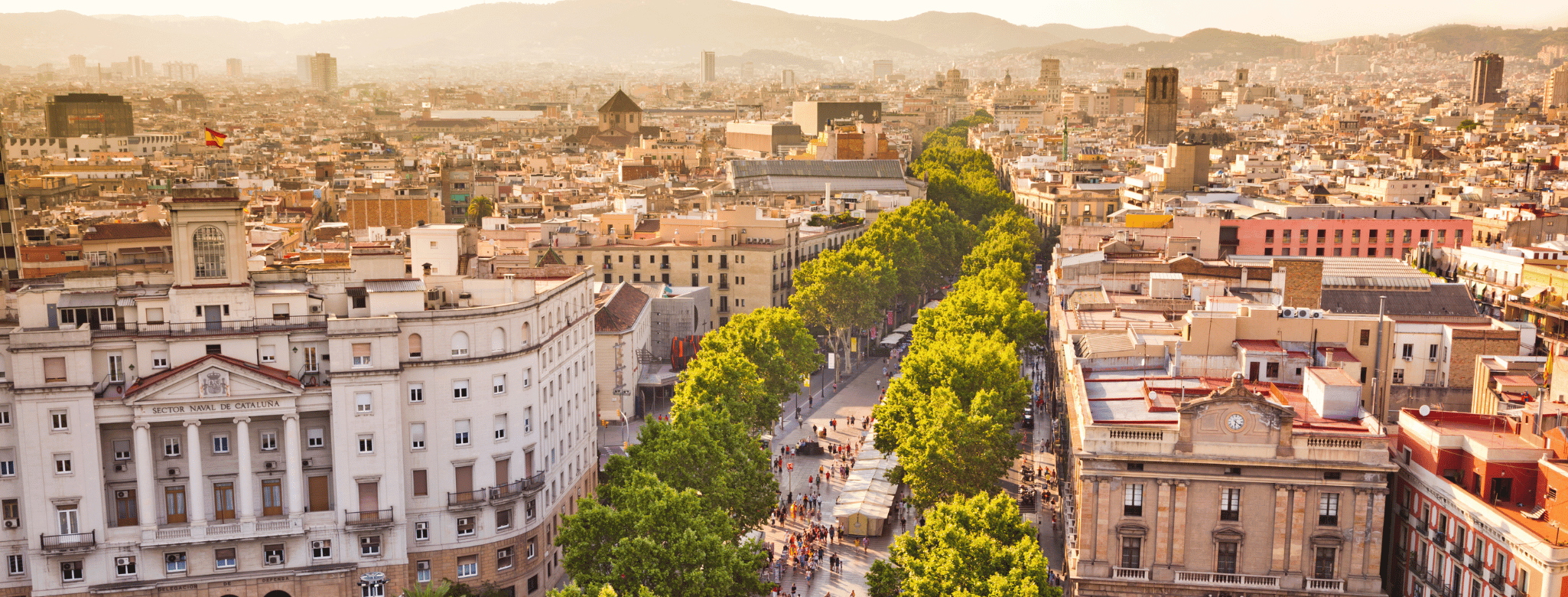
All You Need to Know Before Moving to Barcelona : our City guide
Thinking of calling Barcelona home in 2025? Sunny skies, beach vibes, and a fresh start in Spain, sounds good, right?
At Blu Selection (yes, we’re based in Barcelona), we’ve helped tons of people like you move, work, and settle in.
This guide has everything you actually need to know about living in Barcelona: prices, rent, food, transport, culture, and where to grab your first vermut. Let’s make it happen. Hola, Barcelona!
About Barcelona in 2025
1-Quick Facts
Population:~1.65 million in the city, 5.5 million in the metro area
Foreign-born residents:22%, from over 180 nationalities
Annual visitors:~20 million
Average sunshine hours:2,850 to 3,000 per year
Languages spoken: Spanish, Catalan (official), English widely used in international settings
2-What makes Barcelona so special?
Barcelona combines Mediterranean charm, cosmopolitan energy, and a deep cultural heritage. From modernist architecture to golden beaches, the city blends history with innovation.
Living Highlights:
Walkable neighbourhoods and a bike-friendly layout
High-quality healthcare system
World-class public transport
Strong expat and digital nomad communities
Endless culinary and cultural events
3-Getting Around
Metro, Bus, Tram (operated by TMB):
T-usual (monthly unlimited pass):42.00€ (Zone 1)
T-casual (10 rides): 12.15€
T-jove (Under 25s, 3 months unlimited): 80.00€
T-dia (1-day unlimited): 11.20€
Cycling & Walking: 240 km of bike lanes. Bicing system (yearly, with NIE only): 35€ or 50€. 52% of inner-city trips are done on foot or by bike
4-Airport Access:
Aerobus: 6.75€, every 5-10 min
Metro (L9 Sud): covered by T-usual/T-jove
Train (R2): every 30 min from Terminal 2
Taxi: 30-40€, 25-35 min
5-Local Rhythms & Schedules
Shops: 9:30–13:30 & 17:00–20:30 (weekdays); malls open all day
Lunch: 13:00–15:30
Dinner: 20:00–23:00 (yes, really!)
6-Public Holidays
Jan 1: New Year’s Day
Jan 6: Epiphany
Mar 28: Good Friday
Apr 1: Easter Monday
May 1: Labour Day
Jun 24: Sant Joan
Aug 15: Assumption Day
Sep 11: National Day of Catalonia
Sep 24: La Mercè (Barcelona only)
Oct 12: Spanish National Day
Nov 1: All Saints’ Day
Dec 6: Constitution Day
Dec 8: Immaculate Conception
Dec 25: Christmas Day
Dec 26: Sant Esteve
7-Cost of Living
Accommodation:
1BR in city centre: 900–1,500€
Shared room: 450–800€
Utilities (3BR): 90–200€
Groceries:
Bread: 1.20€
Milk: 1.10€
Chicken (500g): 4.50€
Water (1.5L): 0.40–1.00€
Eating Out:
Coffee: 1.70–2.50€
Menu del día: 11–15€
Dinner for two: 30–60€
Cocktail: 5–11€
Transport:
Monthly TMB pass: 42.00€
Taxi (5–10 km): 10–16€
Bike sharing (yearly): 35–50€
Entertainment:
Gym: 30–65€
Cinema: 6–12€
Club entry: 10–20€
Museum: many are free on Sundays!
8-Entry-Level Salaries & Careers
Average entry-level salary in Barcelona: 1,300–1,600€ net/month
Competitive sectors for international talent: Customer Service, IT, Sales, Digital Marketing
Want to compare offers? Download our 2025 Salary Guide.
9-Finding a Home
Housing is competitive but manageable with the right tools. Use platforms like Idealista, Badi, or Spotahome. Be ready to move fast, and always check listings in person when possible. Watch out for scams!
10-Culture, Food & Local Traditions
From La Mercè to Sant Jordi, FC Barcelona games to tapas nights, culture is everywhere.
Modernist gems: Sagrada Familia, Casa Batlló, Palau de la Música
Learn more about the free museum entrances in Barcelona here.
Hidden gems: Bunkers del Carmel, Laberint d’Horta
Tapas to try: Pa amb tomàquet, bombas, calçots
Barcelona isn’t just about sunshine and sangria, it’s also rich in Catalan culture and festive traditions you’ll quickly fall in love with.
Tió de Nadal(Christmas log): A wooden log kids “feed” before it magically delivers sweets on Christmas Day.
The Twelve Grapes: Eat a grape for each midnight chime on New Year’s Eve — 12 grapes, 12 months of luck!
Els Reis (Three Kings Day): On January 5, gifts are exchanged as the Three Kings parade through Barcelona.
Sant Jordi(April 23): Catalonia’s Valentine’s Day — couples exchange roses and books in a celebration of love and literature.
San Juan(June 23): Beach bonfires, fireworks, and Coca de Sant Joan mark the loudest and liveliest night of the year.
All Saints' Day (Nov 1):Locals honour the dead by eating panellets and castanyes (chestnuts).
Pa amb tomàquet & vermut: Catalan staples, toasted bread with tomato, and herbal vermouth as a pre-lunch ritual.
Festa Major: Each neighbourhood hosts its own street festival, featuring castells (human towers) and Sardana dancing.
La Siesta: Still alive and well! A short afternoon rest, proven to reduce stress and boost focus.
Want to feel like a local in Barcelona? Embrace these traditions, they’re a big part of life in Catalonia.
Your Next Steps: our Job Opportunities in Barcelona
Browse open roles on Blu Selection’s job board
Follow us on LinkedIn & Instagram for relocation and recruitment tips
Read more:
